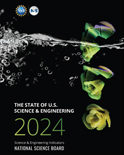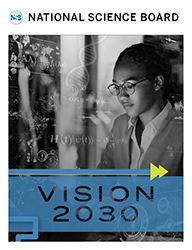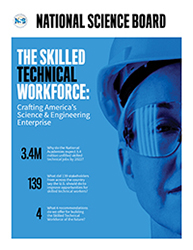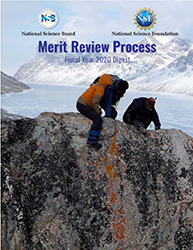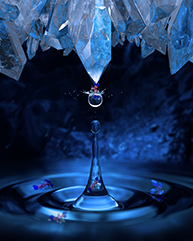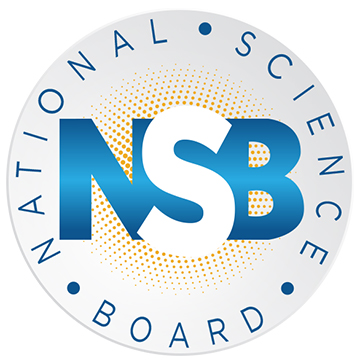
U.S. innovation activities are concentrated in geographic regions
New report provides latest data on patenting, trademarks, and other measures of innovation
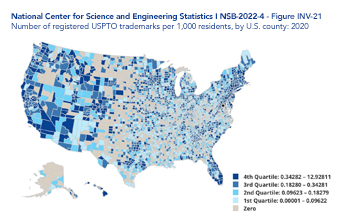
Number of registered USPTO trademarks per 1,000 residents, by U.S. County: 2020 (Credit and Larger Version)
March 18, 2022
Patents and trademarks represent early and late stages of innovation activity. Invention, Knowledge Transfer, and Innovation, published today by the National Science Board (NSB), shows that patenting and trademark activities are concentrated in certain areas of the U.S., with the highest rates on the east and west coasts, around the Great Lakes, and in parts of the Southwest. The report shows that biological and biomedical sciences and health sciences are major drivers of U.S. patenting activity across academia, business, and federal government sectors.
Prepared by the National Center for Science and Engineering Statistics under NSB guidance, the new report is part of the 2022 edition of the congressionally mandated Science and Engineering Indicators report on the state of the U.S. science and engineering enterprise.
"To get patenting and trademark activities more broadly distributed throughout the country, we need to leverage existing regional strengths and strategically expand our innovation capacity across the country,” says NSB member Steven Leath.
Additionally, U.S. patents are increasing globally, and inventors residing in the U.S. now represent fewer than half of U.S. Patent and Trademark Office (USPTO) patents. Inventors in Japan and the European Union make up the largest shares of patents granted to foreign inventors. And while inventors from China make up a relatively small number of USPTO patents, these have grown more than 10-fold over the last decade. Across all national jurisdictions, nearly 50% of all international patents were granted to inventors from China in 2020.
Technology transfer is a way to evaluate the transfer of knowledge from academic and government sectors to the industry sector. Universities reported continued growth in patenting and technology licensing activity, including through licensing to startup firms. Of the almost 8,000 new university licenses or options on licenses, 19% went to startup firms using university technology in 2019. The federal government’s Small Business Innovation Research and Small Business Technology Transfer programs supported more than 4,000 firms in 2020.
“The partnerships between academia, government, and industry are vital to delivering the benefits of research to society,” says Leath. “Proposed legislation for a new Directorate at the National Science Foundation (NSF) aims to accelerate the development of new technologies and the translation of research into applications.”
Other findings:
- More than half (56%) of U.S. business-authored publications share a U.S. academic coauthor.
- Venture capital continues to spread globally and investors from China increasingly provide capital both in China and internationally.
- U.S. businesses collaborate extensively with U.S. academic researchers and with foreign authors.
- Women and underrepresented demographic groups are increasing their participation in patenting and firm-level innovation.
About Science and Engineering Indicators
Science and Engineering Indicators is a congressionally mandated report on the state of the U.S. science and engineering enterprise.
About NSB
The NSB identifies issues critical to NSF’s future, establishes its policies, and serves as co-head of agency with the NSF Director. The Board also advises the President and Congress on policy matters related to science and engineering (S&E) and S&E education. Selected for their distinguished service and accomplishments in academia, government, and the private sector, the Board’s 24 presidentially appointed members are leaders in science and engineering, and in science, technology, engineering, and math (STEM) education.
About NCSES
The National Center for Science and Engineering Statistics (NCSES) is the nation's leading provider of statistical data on the U.S. science and engineering enterprise. As a principal federal statistical agency, NCSES serves as a clearinghouse for the collection, interpretation, analysis, and dissemination of objective science and engineering data.
Media Contact
Nadine Lymn, National Science Board, (703) 292-2490,nlymn@nsf.gov
Useful NSB Web Sites:
Home Page: http://www.nsf.gov/nsb
Media Contact: http://www.nsf.gov/staff/staff_bio.jsp?lan=nlymn&org=NSF
News: http://www.nsf.gov/nsb/news
Meetings: http://www.nsf.gov/nsb/meetings
Publications: http://www.nsf.gov/nsb/publications
Facebook: https://www.facebook.com/NationalScienceBoard
Twitter: Twitter: https://twitter.com/intent/user?screen_name=NSF_NSB
YouTube: https://www.youtube.com/channel/UCkrHRzuGSrPp2haQs0T_Pww
To view PDF documents, please download Adobe Acrobat Reader.
